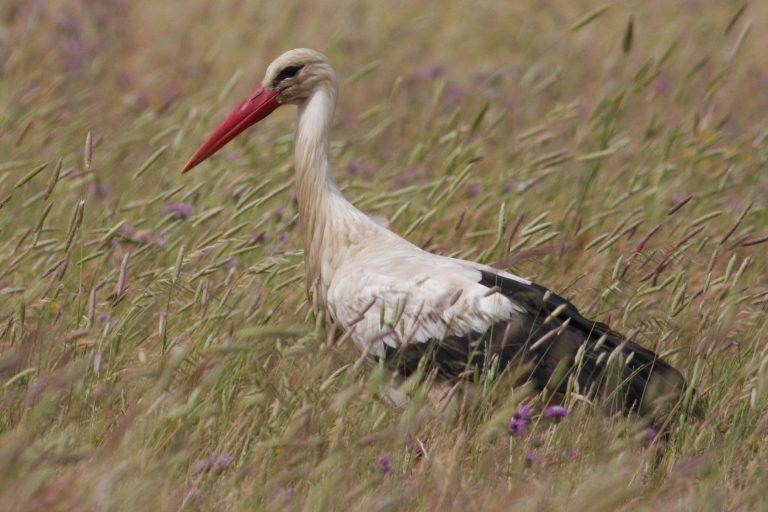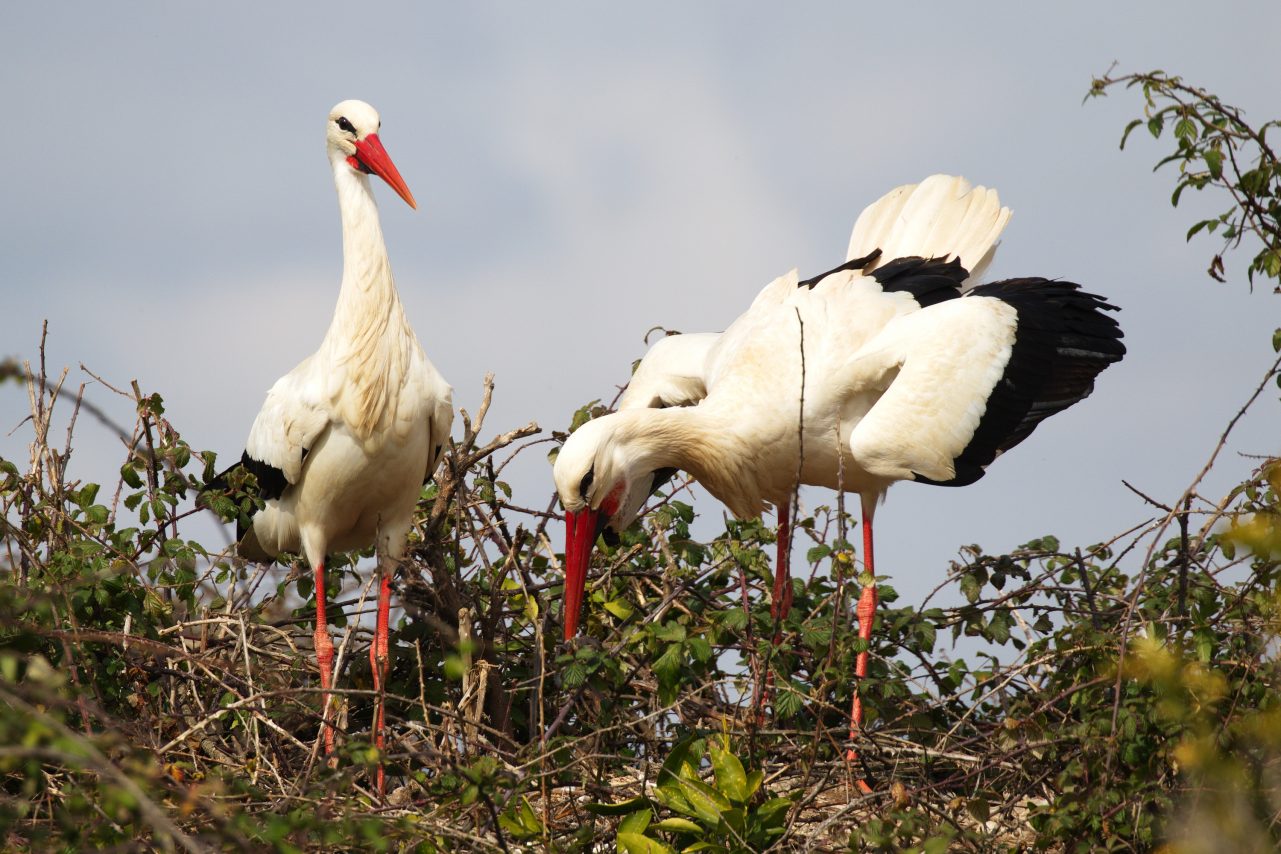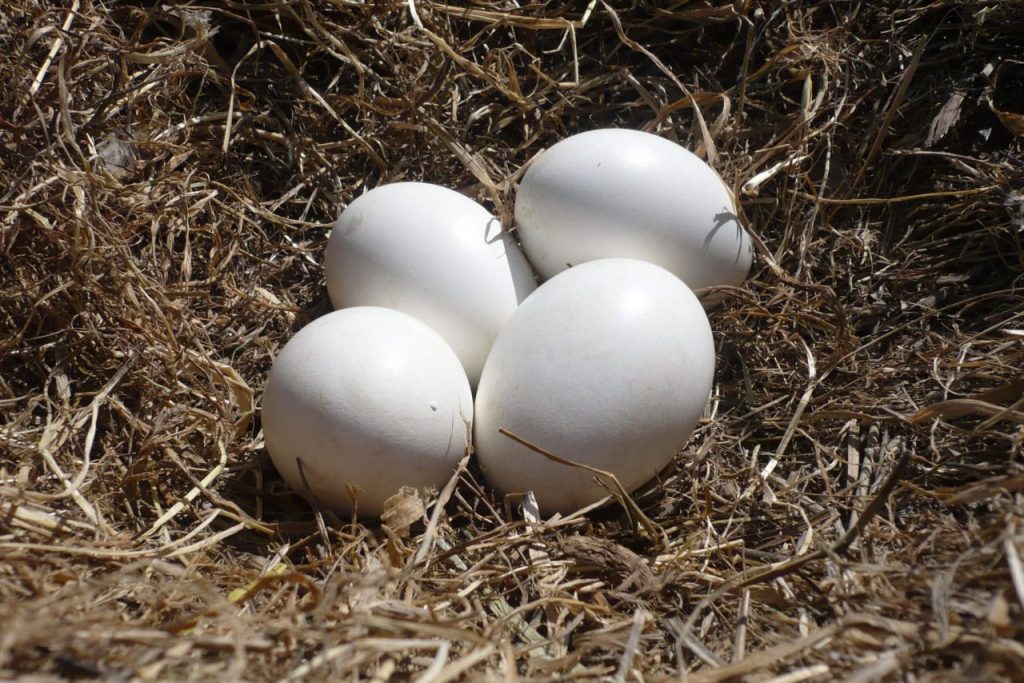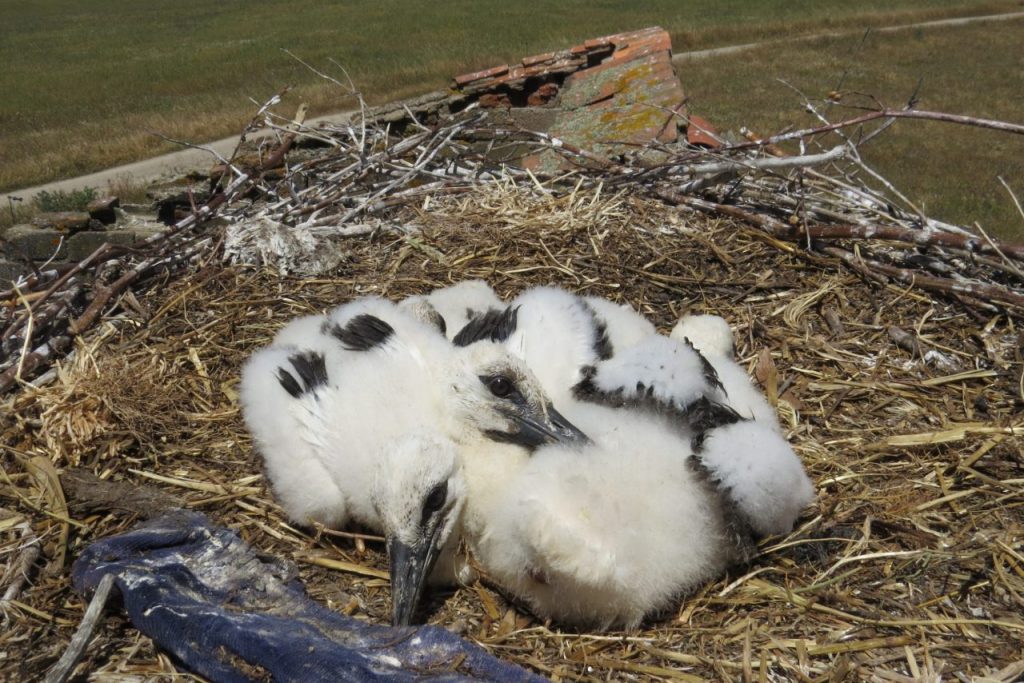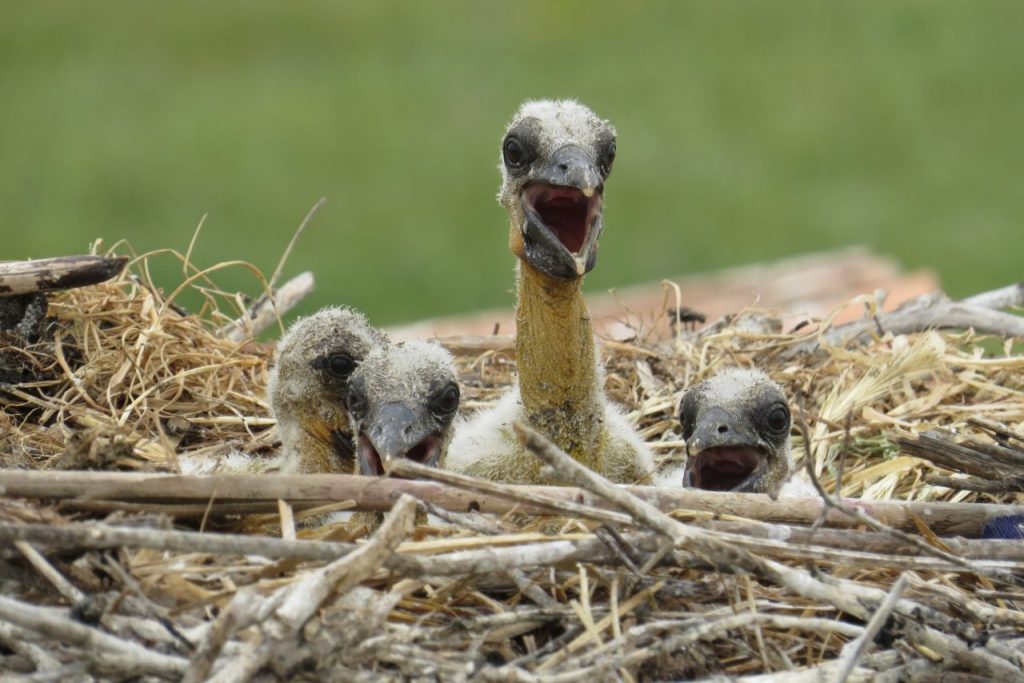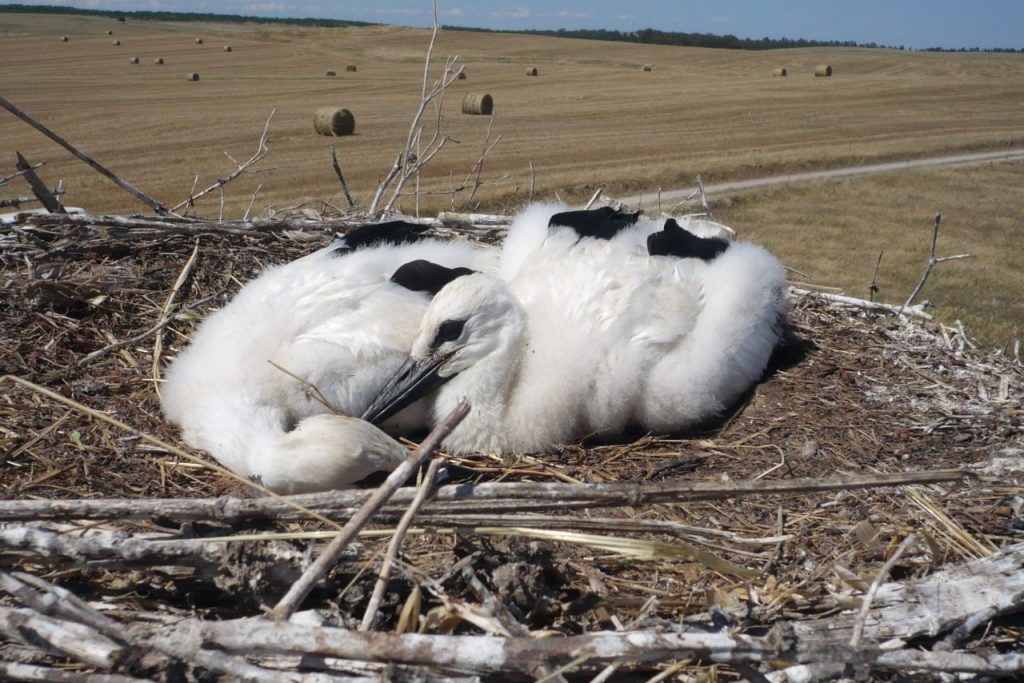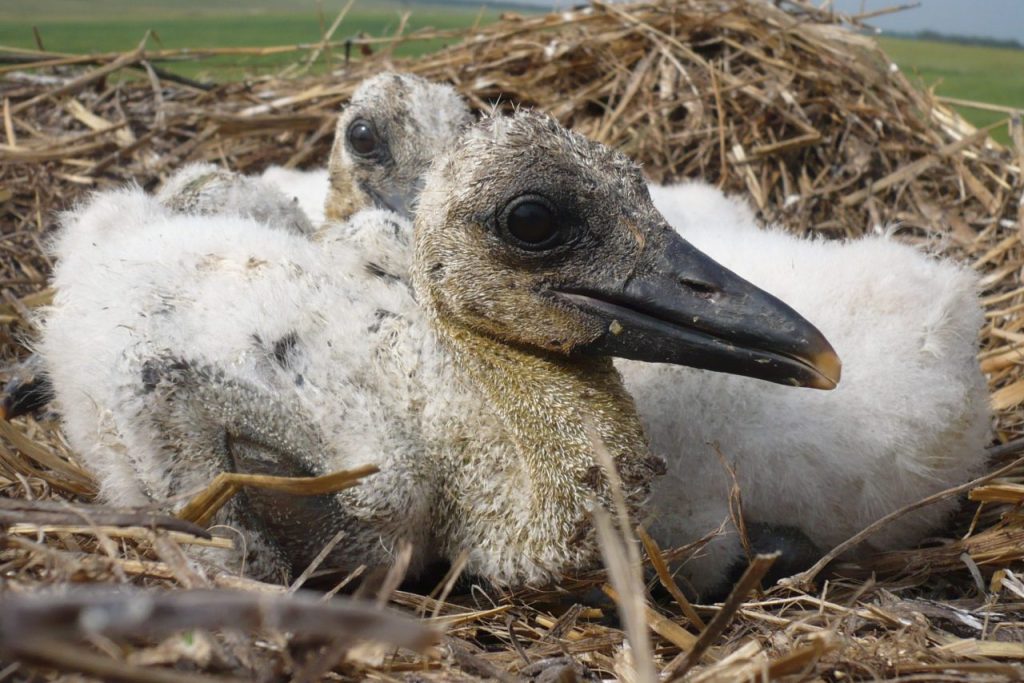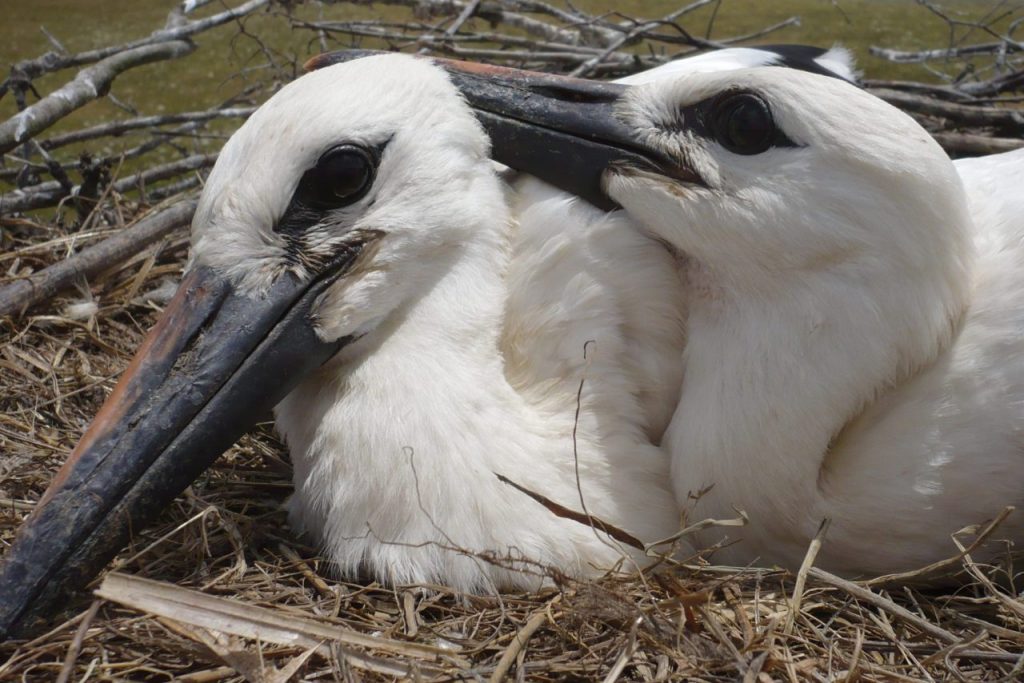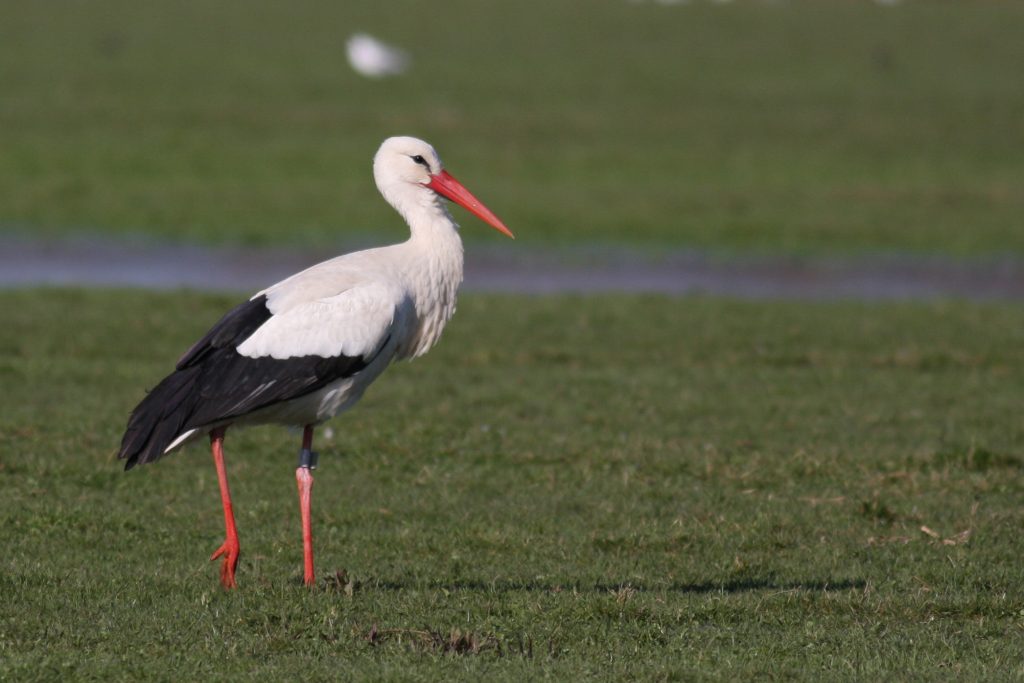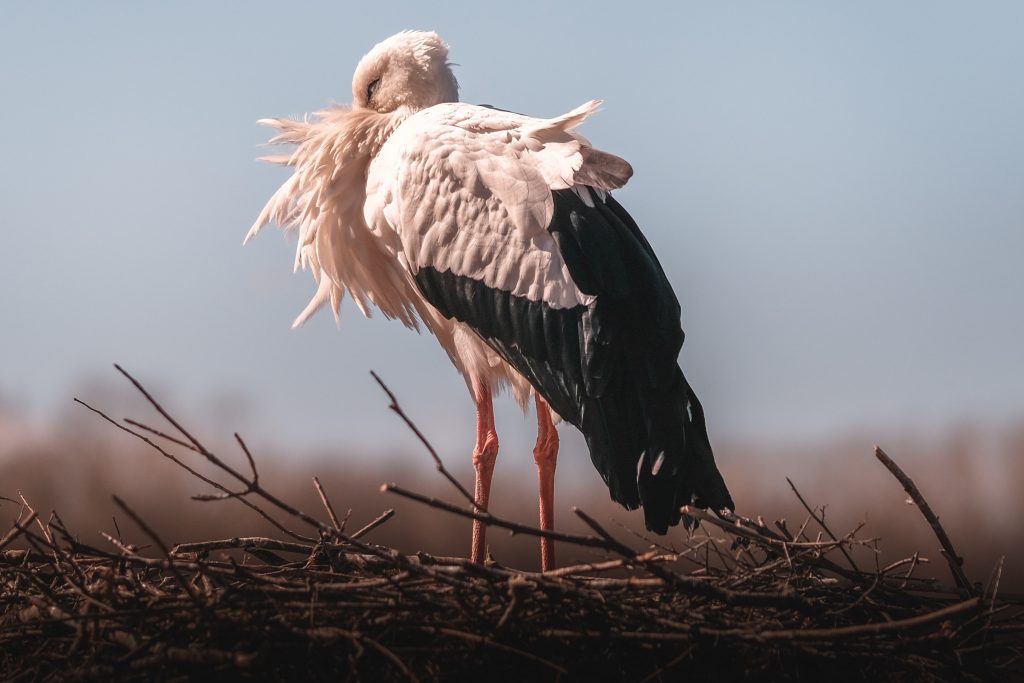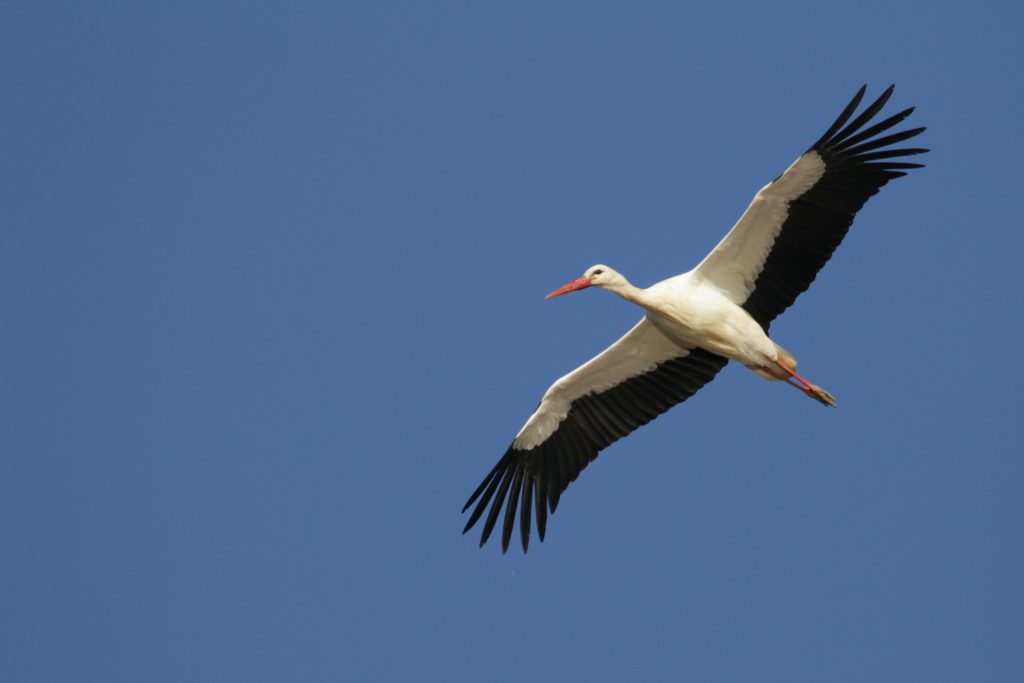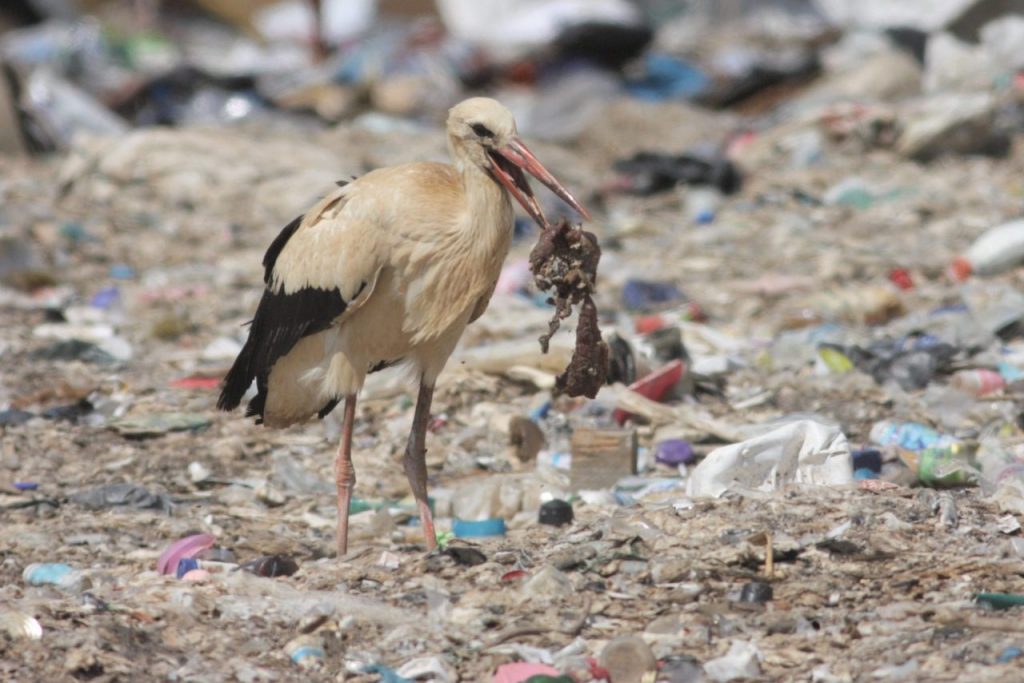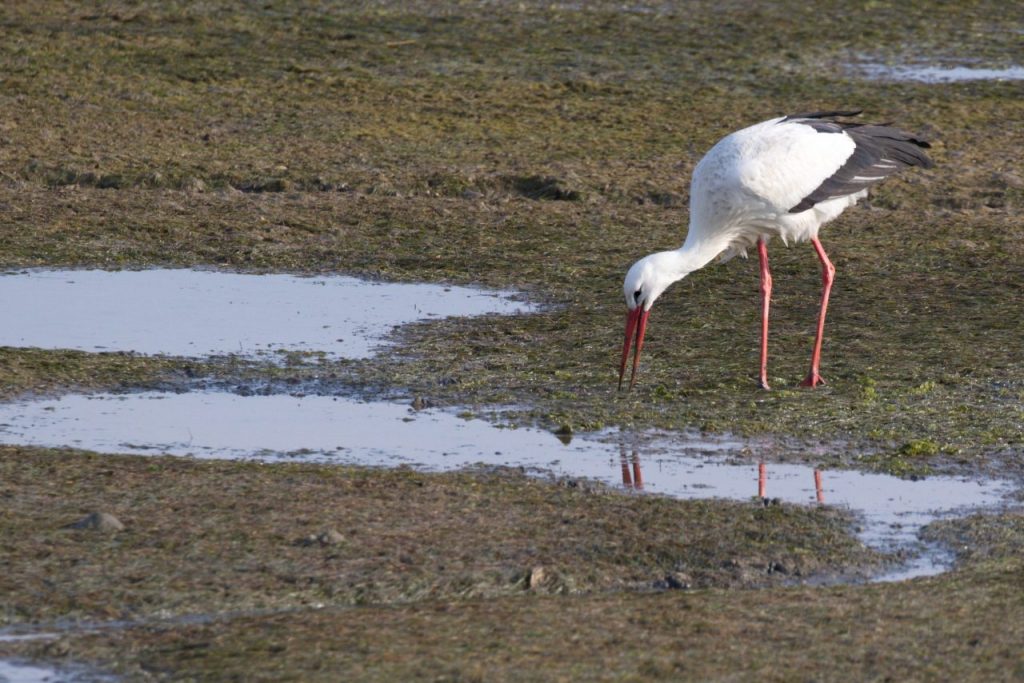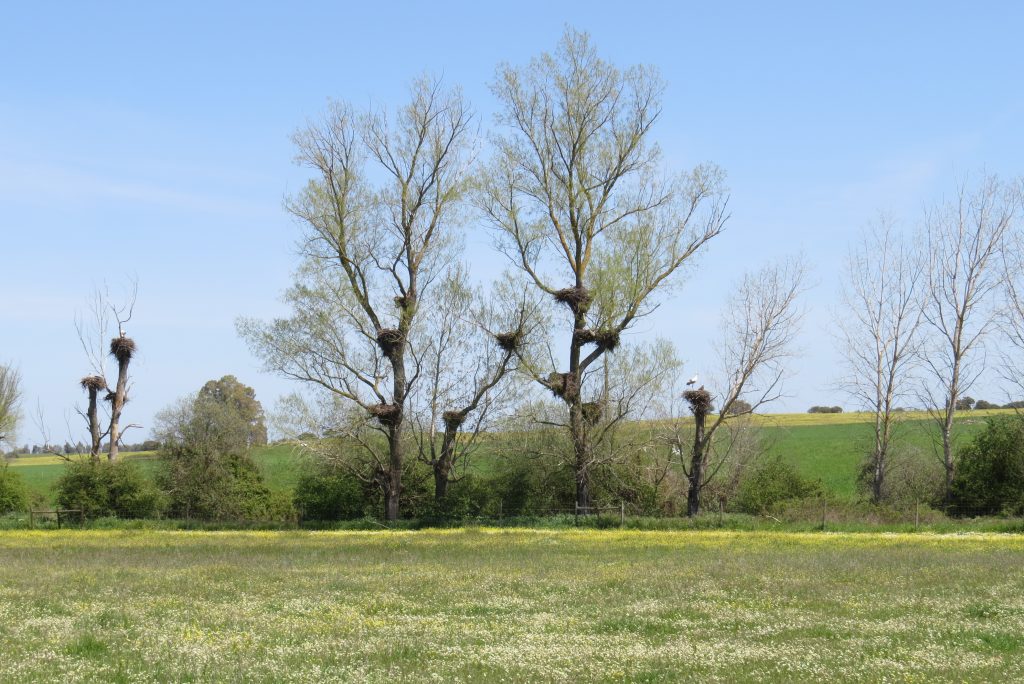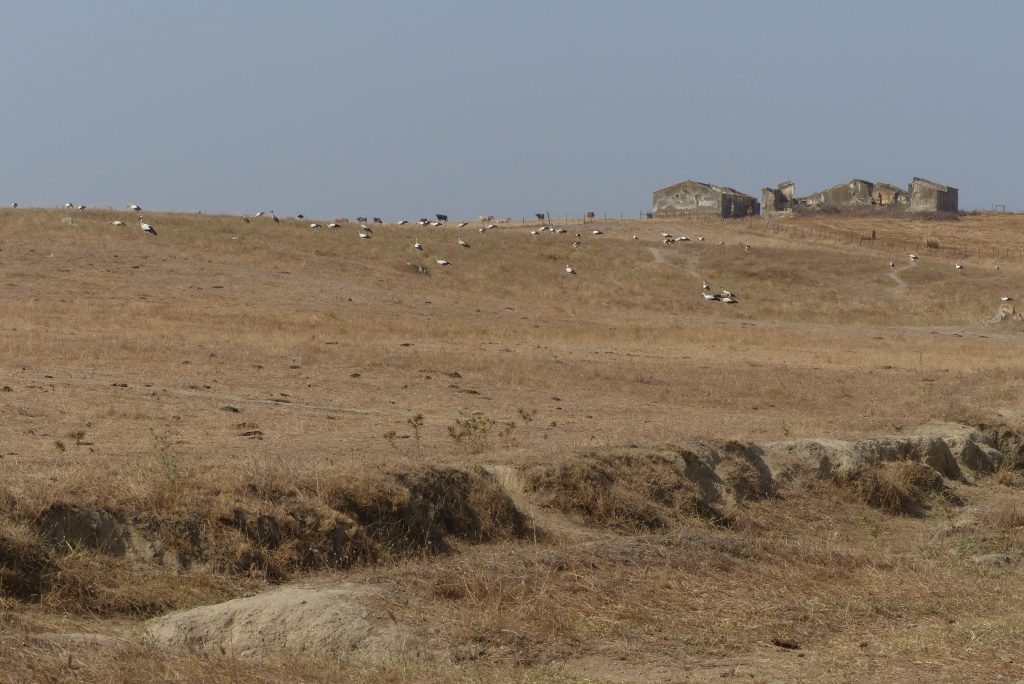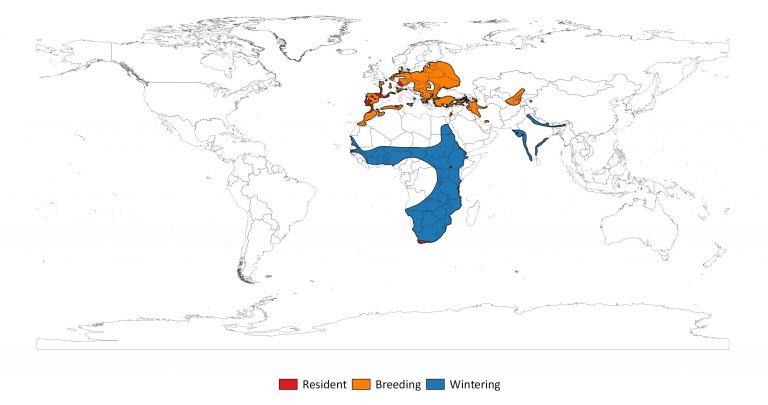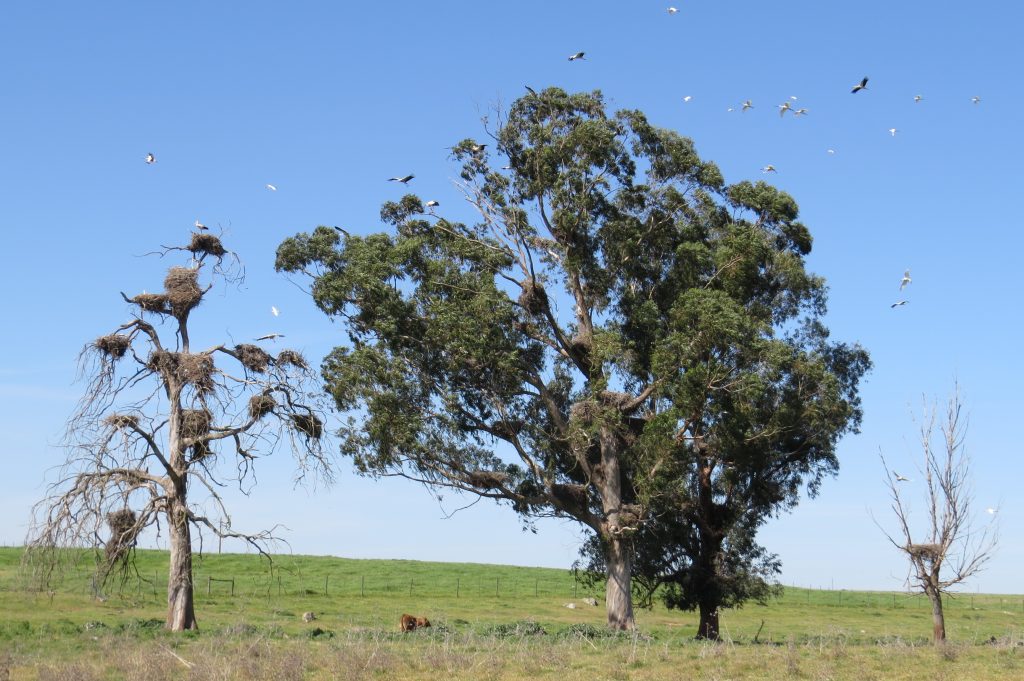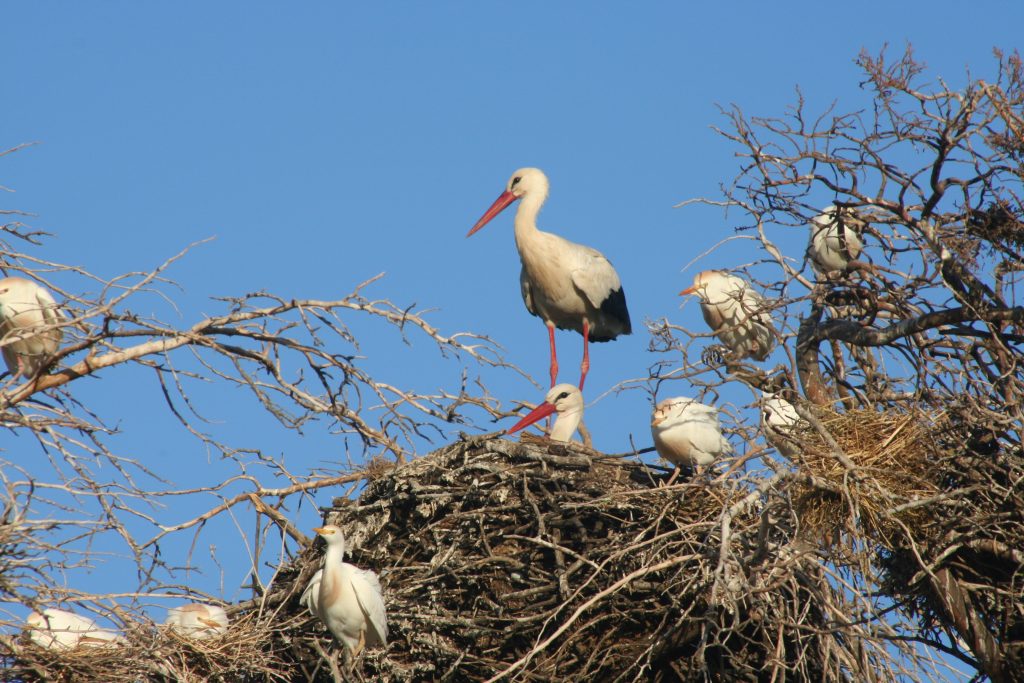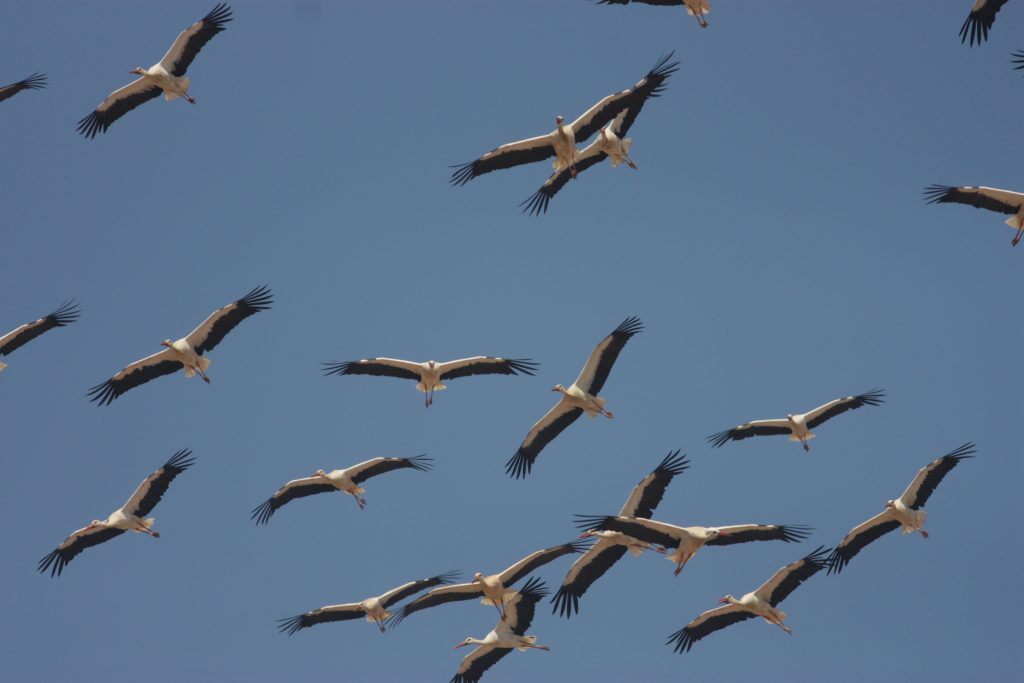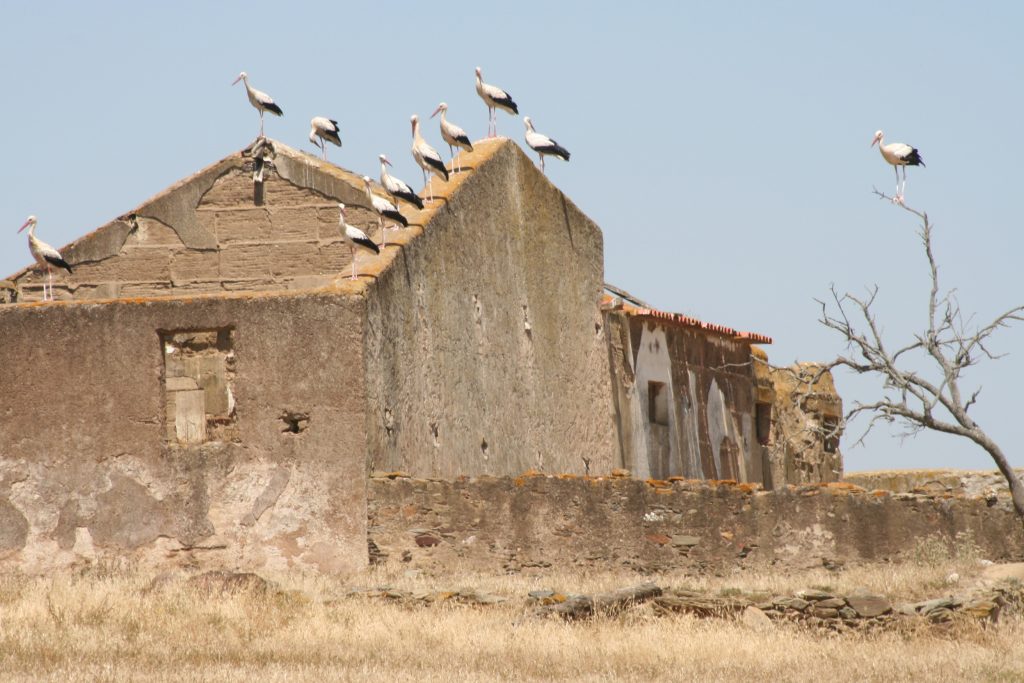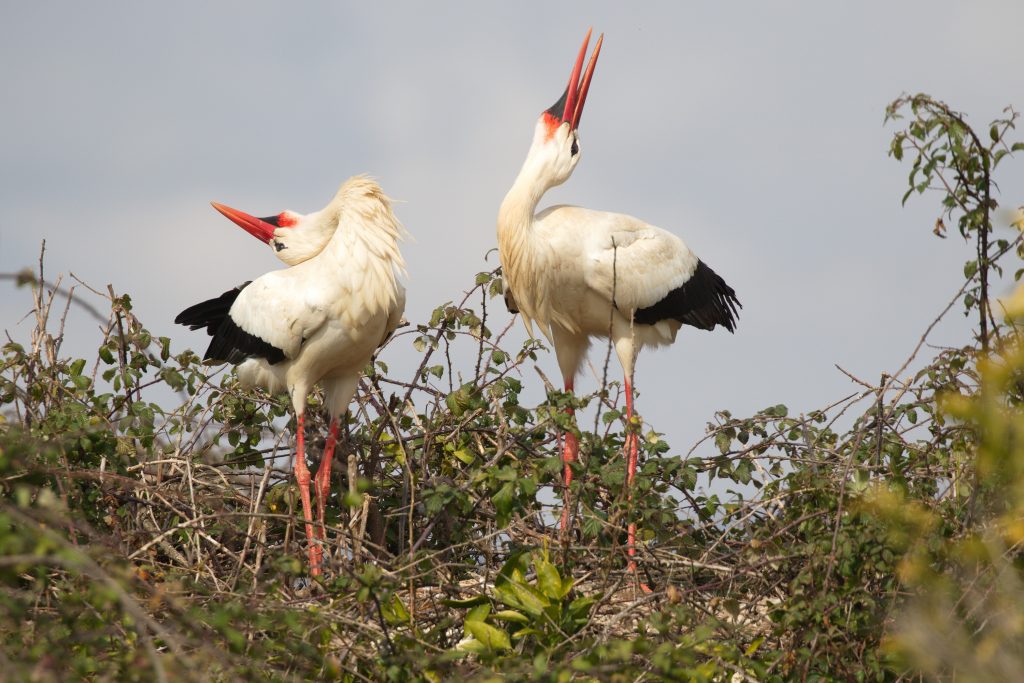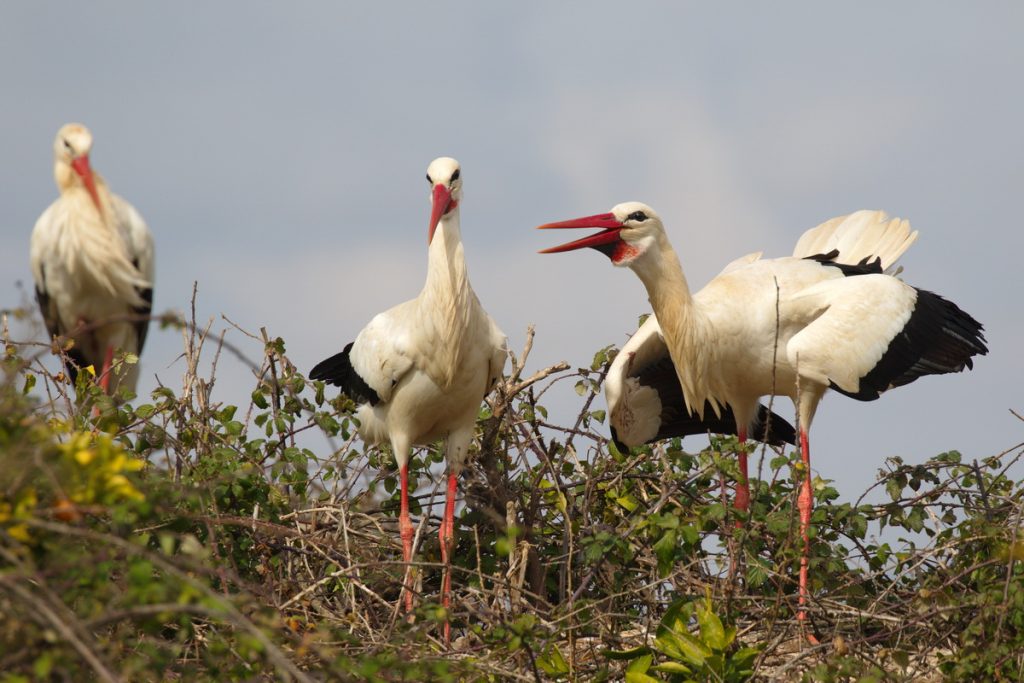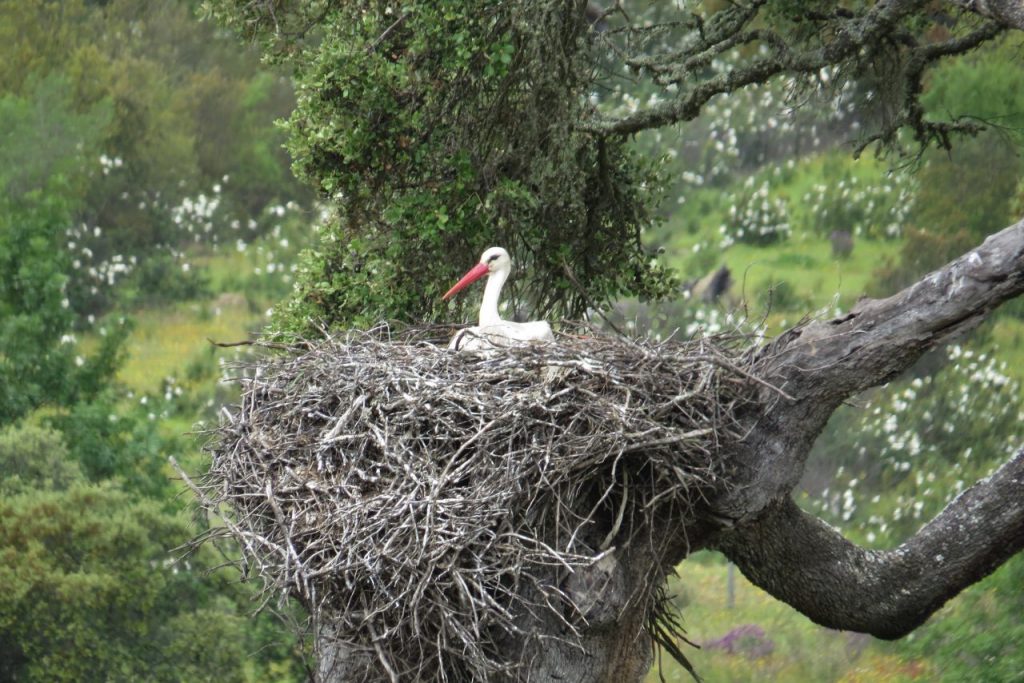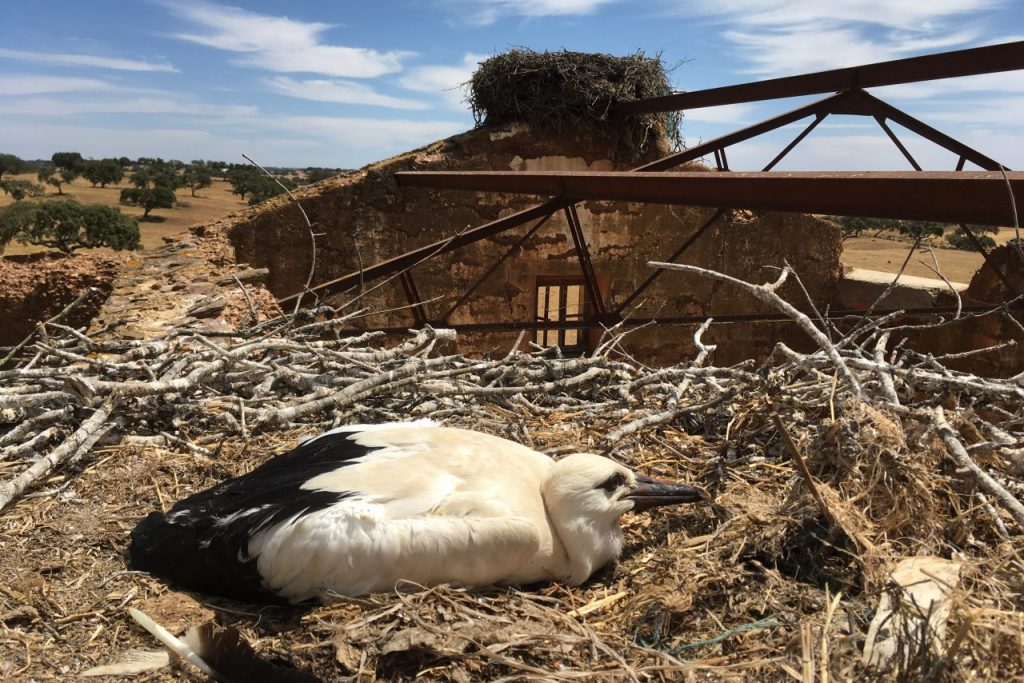WHITE STORK
The White stork (Ciconia ciconia) is a distinctive large wading bird that belongs to the stork family Ciconiidae.
There are two sub-species of white stork, that differ slightly in size, the European White stork which is found breeding in Europe and the African White stork which is found breeding in North West and Southern Africa.
The European White stork nest in central and eastern Europe, and is a long-distance migrant, wintering in Africa from tropical Sub-Saharan Africa to as far south as South Africa.
Characteristics
The White stork is easy to recognize by its white plumage with black flight feathers and wing coverts. It has a strong body which measures 80 to 115 cm from beak tip to tail end and weighs 2.5 to 4.4 kg. It has a wingspan of 155 to 215 cm.
Adults have long pointed red beaks, long red legs with partially webbed feet on the end and a long slender neck. The irises are dull brown or grey with black skin around their eyes and their claws are blunt and nail-like. Males and females are identical in appearance, however, males are slightly larger in size. The feathers on the chest are long and form a ruff which is sometimes used when performing courtship displays.
Upon hatching, the chick is partly covered with short, sparse, whitish down feathers. This early down is replaced about a week later with a denser coat of woolly white down. By three weeks, the young bird acquires black scapulars and flight feathers. On hatching the chick has pinkish legs, which turn to greyish-black as it ages. Its beak is black with a brownish tip. By the time it fledges, the juvenile bird’s plumage is similar to that of the adult, though its black feathers are often tinged with brown, and its beak and legs are typically a duller brownish-red or orange with a darker tip. The bills gain the adults’ red colour the following summer, although the black tips persist in some individuals. Young storks adopt adult plumage by their second summer.
On ground, when foraging, it walks at a gentle pace with its neck held straight and bent slightly forward. When resting, it tends to hunch its head between its shoulders. In flight It is a “glider”, flying slow with regular wing strokes. Their wings are long and broad which enables the bird taking advantage of air thermals to soar up into the sky with outspread, unmoving wings. Like most wading birds, white storks are a spectacular sight when soaring through the air, with their long necks out-stretched forwards and their long legs out-stretched backwards well beyond the end of its short tail. They flap their huge, broad wings as little as possible to save energy.
When migrating between Europe and Africa, it avoids crossing the Mediterranean Sea and detours via the Strait of Gibraltar in the west or the Levant in the east, because the air thermals on which it depends for soaring do not form over water.
Diet
Currently the White stork diet is mainly based on organic food collected from landfills. However, the White stork is a carnivore and consume a wide range of animal prey. They take most of their food from the ground, among low vegetation and from shallow water so that their prey is more accessible, and prefer to forage in areas that are within roughly 5 km of their nest and sites. Their diet varies according to season, locality and prey availability. Common food items include insects, earthworms, amphibians, reptiles and small mammals. Less commonly, they also eat bird eggs and young birds, fish, molluscs, crustaceans and scorpions. They hunt mainly during the day, swallowing small prey whole, but killing and breaking apart larger prey before swallowing.
The diet of non-breeding birds is similar to that of breeding birds, but food items are more often taken from dry areas.
Habitat
The White stork’s preferred habitats are areas with open wetland, particularly grassy areas which are wet or periodically flooded like riverbanks, marshes, swamps, ditches, grassland and meadows, and avoid areas with taller vegetation cover such as forest and shrubland.
They also make use of grasslands, wetlands and farmlands on the wintering grounds in Africa.
Distribution
In Europe the White stork was originally widely established. Today it has a wide range across Europe, clustered in the Iberian Peninsula in the west and much of eastern and central Europe, but there are large gaps in the distribution.
Behaviour
The White stork is a gregarious bird which breeding pairs may gather in small groups to hunt, and colony nesting is frequent. However, groups among White stork colonies vary widely in size and the social structure is loosely defined. Young breeding storks are often restricted to peripheral nests, while older storks attain higher breeding success while occupying the better quality nests toward the centres of breeding colonies.
When on long distance migration routes and when wintering in Africa White storks can flock in their thousands of individuals.
Non-breeding birds generally gather in groups of 40 or 50 during the breeding season.
Communication
White storks are vocal birds who produce a noisy bill-clattering sound made by rapidly opening and closing their beaks which is amplified by the throat pouch which acts as a sound box. Young storks produce croaks, whistles and whines when begging for food and also begin the typical beak clattering. Used in a variety of social interactions, bill-clattering generally grows louder the longer it lasts, and takes on distinctive rhythms depending on the situation.
The up-down display is used for a number of interactions with other members of the species. Here a stork quickly throws its head backwards so that its crown rests on its back before slowly bringing its head and neck forwards again, and this is repeated several times. The display is used as a greeting between birds, post coitus, and also as a threat display. Breeding pairs are territorial over the summer, and use this display, as well as crouching forward with the tails cocked and wings extended.
Reproduction
Originally White storks build its nests in old trees and rocks, but currently its more domesticated descendants usually choose buildings or purpose-built man-made platforms. Nests are built by mating pairs and are large, solidly constructed platforms made from sticks normally in loose colonies but it often nests close to human habitation.
Each nest measures 1 – 2 m in depth, 0.8 – 1.5 m in diameter and 60 – 250 kg in weight. Nests may be used for several years and other bird species often nest within the large nests of the White-stork such as Sparrows and Common Starlings.
Most White storks are monogamous and pair for life, however, extra-pair copulation can occur. The breeding time of the White stork is from the beginning of April to the first days of August. A pair raises a single brood a year and the female typically lays 4 eggs, though clucthes of 1 – 7 eggs have been recorded, which are laid at two day intervals. They typically measure 73 mm x 52 mm and weigh 96–129 g. The incubation period is shared between both parents and it begins as soon as the first egg is laid, so the brood hatches asynchronously, beginning 33 to 34 days later. The first hatchling typically has a competitive edge over the others.
After hatching, both parents take turns to feed the chicks. Food is placed on the edge of the nest by the parents but water is provided by regurgitation.
The chicks fledge after about 2 months and usually begin breeding when they are 3 – 5 years old. By this time, the young storks plumage is similar to that of the adults.
White storks can live more than 30 years.
Conservation Status
The White stork is classed as “Least Concern” (LC) by the IUCN.
The White stork is one of the species to which the Agreement on the Conservation of African-Eurasian Migratory Waterbirds (AEWA) applies. However, threats to the White stork include the continued loss of wetlands, collisions with overhead power lines, use of persistent pesticides and largely illegal hunting on migration routes and wintering grounds.

